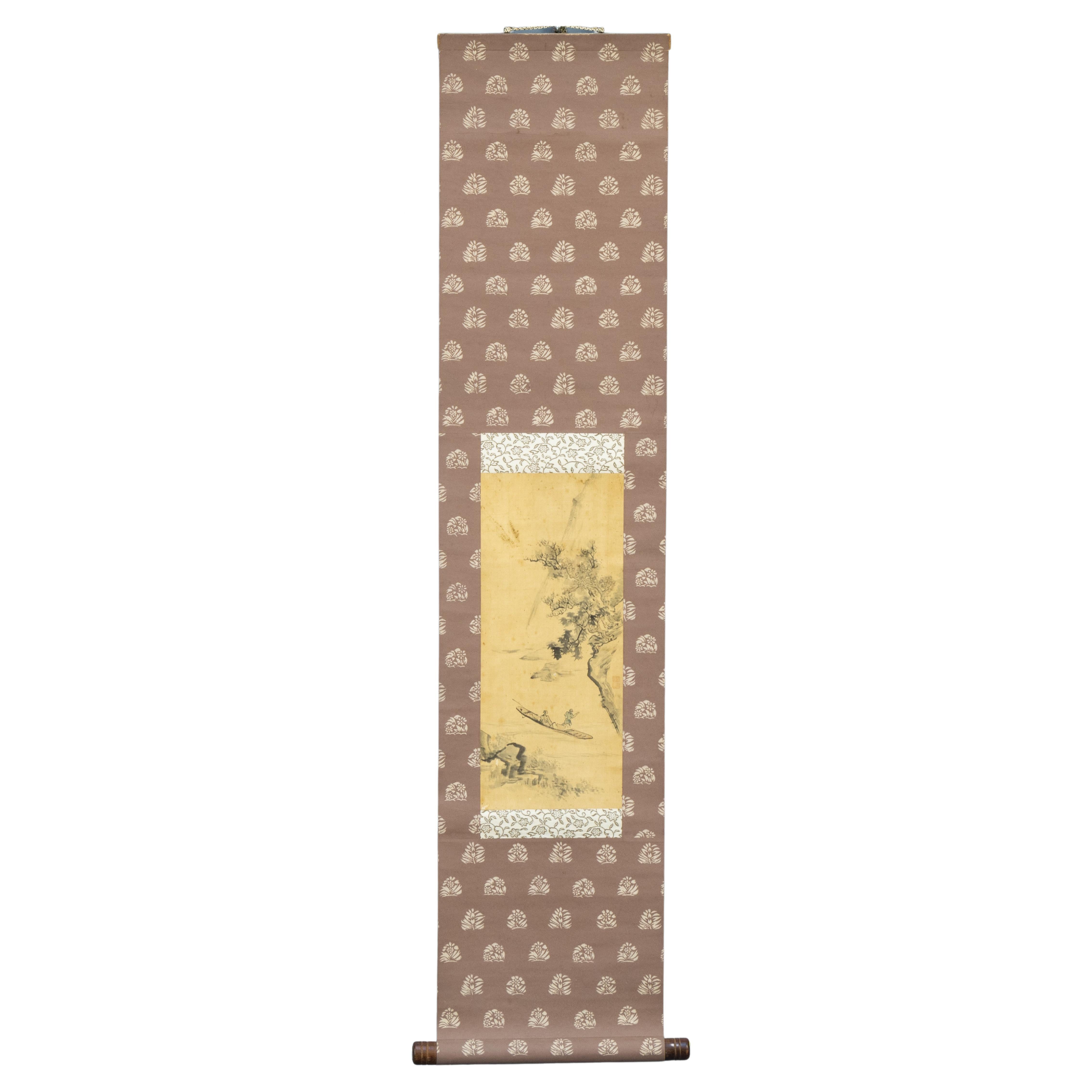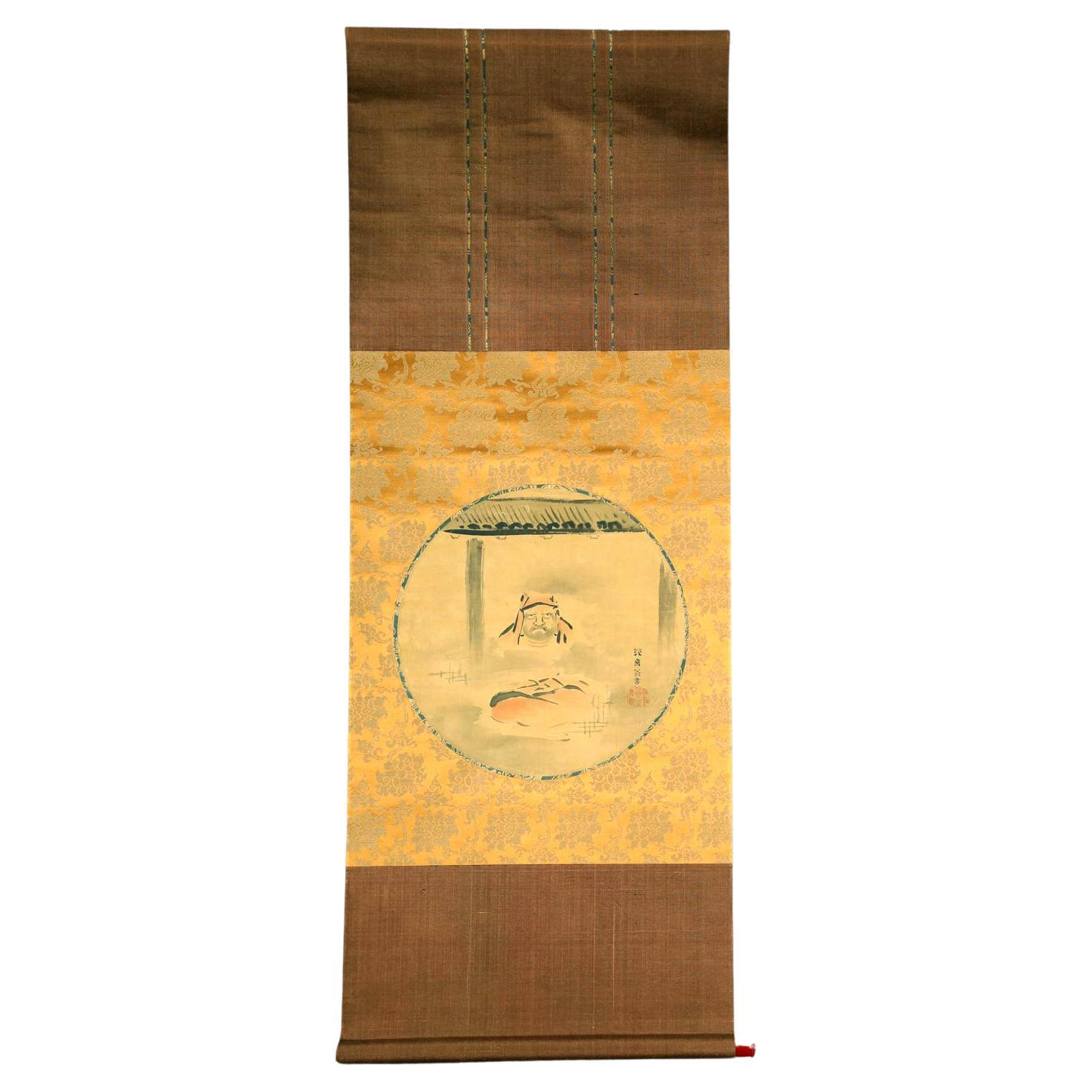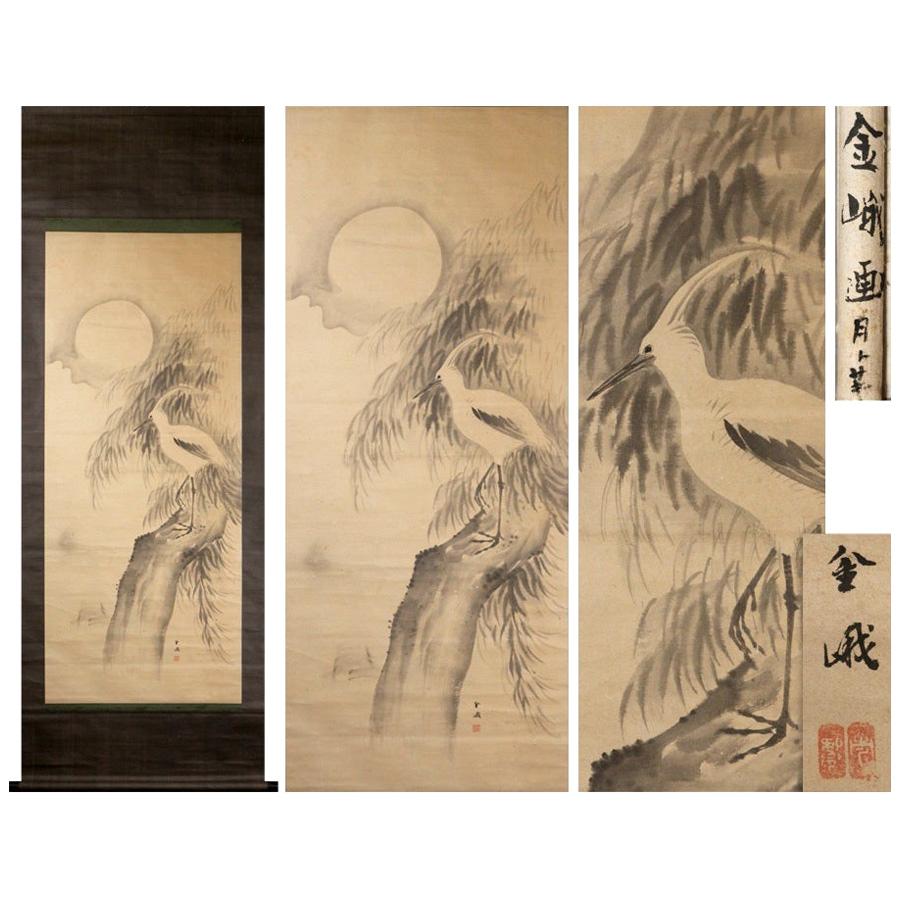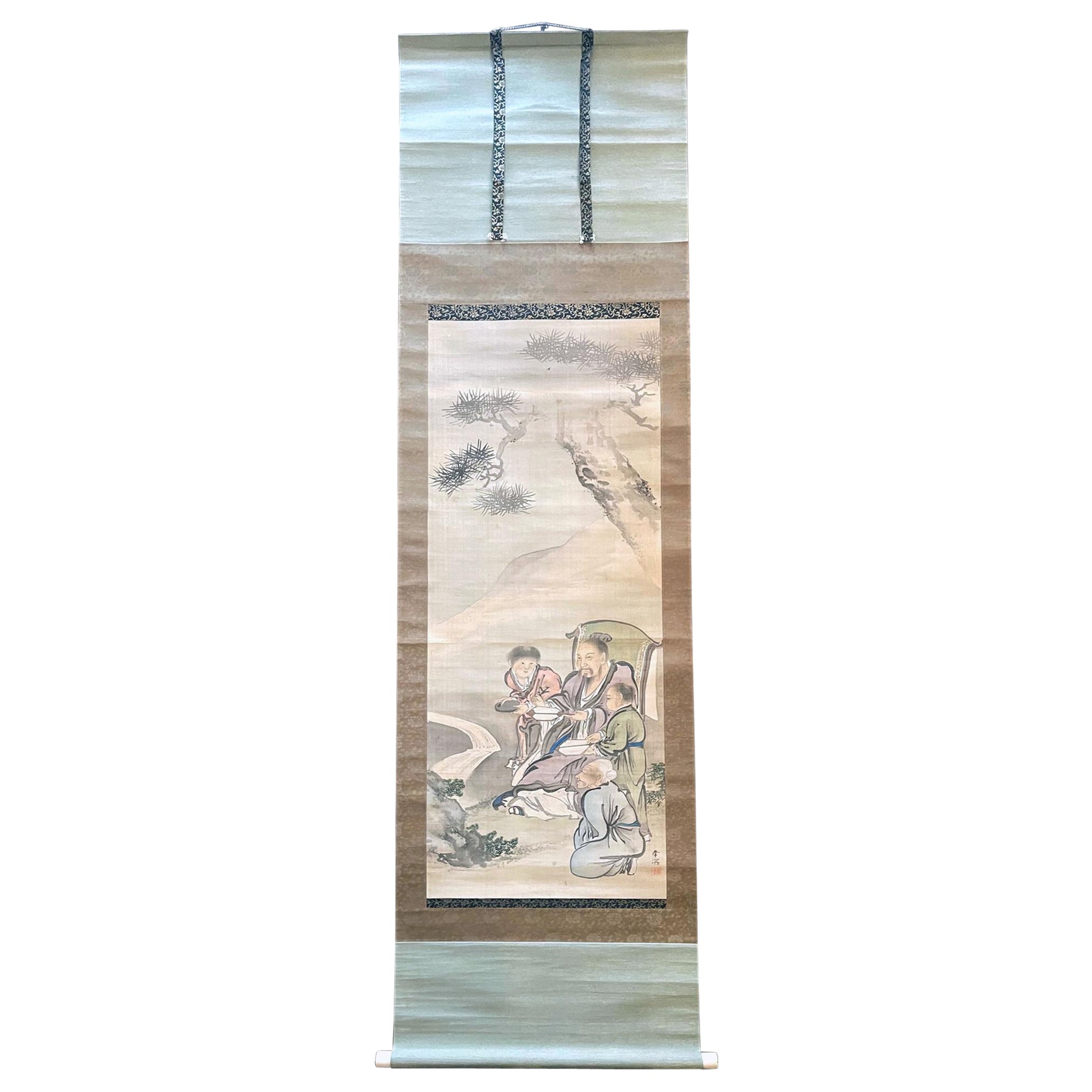Items Similar to Ôhara Donshû (1792 - 1857) Edo Period - Smell of Plums in the Night. Scroll
Want more images or videos?
Request additional images or videos from the seller
1 of 5
Ôhara Donshû (1792 - 1857) Edo Period - Smell of Plums in the Night. Scroll
About the Item
Ôhara Donshû (1792 - 1857) De geur van pruimen in de nacht
Rolschildering / scroll op zijde, houten rollers, in houten cassette. Provenance: Oranda Jin. A/B 98.8 x 29.4 / 184 x 41.5 cm
98.8 x 29.4 / 184 x 41.5 cm
- Dimensions:Height: 72.64 in (184.5 cm)Width: 16.34 in (41.5 cm)Depth: 0.04 in (1 mm)
- Style:Meiji (Of the Period)
- Materials and Techniques:
- Place of Origin:
- Period:
- Date of Manufacture:19th Century
- Condition:Wear consistent with age and use.
- Seller Location:Amsterdam, NL
- Reference Number:
About the Seller
5.0
Gold Seller
These expertly vetted sellers are highly rated and consistently exceed customer expectations.
Established in 2015
1stDibs seller since 2019
158 sales on 1stDibs
Typical response time: 9 hours
- ShippingRetrieving quote...Ships From: Amsterdam, Netherlands
- Return PolicyA return for this item may be initiated within 14 days of delivery.
More From This SellerView All
- Japanese Edo Period Painting Scroll Ônishi Chinnen '1792 - 1851' Artist SignedLocated in Amsterdam, Noord HollandÔnishi Chinnen (1792 - 1851) Schilpadden en bamboo Rolschildering / scroll op papier, benen rollers. B 125.7 x 48.9 / 179.5 x 59.5 cm 125.7 x 48.9 / 179.5 x 59.5 cm.Category
Antique Mid-19th Century Japanese Meiji Paintings and Screens
MaterialsSilk
- Japanese Edo Period Painting Scroll Fisherman in Landscape Japan Artist SignedLocated in Amsterdam, Noord HollandJapanse school Vissers in landschap Rolschildering / scroll op zijde, houten rollers. B- 35 x 14.7 / 106 x 23.5 cm 35 x 14.7 / 106 x 23.5 cmCategory
Antique Mid-19th Century Japanese Meiji Paintings and Screens
MaterialsSilk
- Lovely Nihonga Scene Meiji/Edo Period Scroll Japan Artist Furuichi KintomeLocated in Amsterdam, Noord HollandIt is a work drawn by Furuichi Kintomi as you can see. In addition to the fantastic depth of willow under the moon, the Egret that shines in the night view is a truly delicious pie...Category
Antique 19th Century Japanese Meiji Paintings and Screens
MaterialsSilk
- Japanese Meiji Period Painting Scroll Night Landscape Nihonga Japan Artist SignLocated in Amsterdam, Noord HollandJapanse school Boerderij in bamboebos in maanlicht Rolschildering / scroll op zijde, benen rollers. B 140.4 x 42 / 198.5 x 54.5 cm 140.4 x 42 / 198.5 x 54.5 cm.Category
Antique Mid-19th Century Japanese Meiji Paintings and Screens
MaterialsSilk
- Lovely Late Edo Period Scroll Paintings Japan Artist Landscape PaintedLocated in Amsterdam, Noord HollandArtist: "Hineno Taiyama" End of the Edo period painter. Osaka production. Hine Taizan (Hine Taizan, 10 years of culture (1813)-March 13, 1868 (April 24, 1869) is a literary painter...Category
Antique 19th Century Japanese Edo Paintings and Screens
MaterialsSilk
- Flower Scene Edo Period Scroll Japan 19c Artist Kiyoshi WatanabeLocated in Amsterdam, Noord HollandAs you can see, this is an old painting by Kiyoshi Watanabe, a colored iris and a red dragonfly. It has a simple yet calm texture, and the appearance of a red dragonfly standing li...Category
Antique 18th Century Japanese Edo Paintings and Screens
MaterialsSilk
You May Also Like
- Japanese Silk Scroll of Daruma Hanabusa Itcho Edo PeriodLocated in Atlanta, GAA Japanese hanging scroll attributed to Edo period painter Hanabusa Itcho (1652-1724). The artwork features a silk roundel nicely mounted in golden brocade background. The painting depicts a robed Daruma seated in meditation with his eyes widely open. The rendition of the famous monk, one of the most beloved subjects in Japanese art, was extremely minimalistic. With just a few effective ink strokes and patches of watercolor, it managed to successfully highlight the essence and spirit of Daruma. The roundel was possibly a center fragment of a larger painting by the artist and was remounted historically. Signed with one of his artist's names. It comes with a wood scroll box with ink inscription of title and artist formal name. For a painting with the same signature, see number 1881,1210,0.1719 in the collection of the British Musuem. Also a horizontal scroll...Category
Antique 18th Century Japanese Edo Paintings and Screens
MaterialsSilk, Paper
- Japanese Silk Scroll Painting of Moneys Edo Period Mori TetsuzanLocated in Atlanta, GAA Japanese mounted vertical hanging scroll painting by Mori Tetsuzan (Japanese, 1775-1841) circa 19th century Edo period. The watercolor and ink on silk ...Category
Antique 19th Century Japanese Japonisme Paintings and Screens
MaterialsSilk, Paper
- Japanese Silk Scroll by Haruki Nanmei Edo PeriodLocated in Atlanta, GAA Japanese hanging silk scroll by late Edo period painter Haruki Nanmei (1795-1878). The gouache painting was in the tradition of Kano school and depicts an old scholar dressed in lo...Category
Antique 19th Century Japanese Edo Paintings and Screens
MaterialsSilk, Paper
- Early Japanese Gohonzon Buddhist Calligraphy Mandala Scroll Edo PeriodLocated in Atlanta, GAA Japanese sumi ink calligraphy Buddhist mandala mounted as a paper hanging scroll known as Kakejiku or sometimes Moji mandala. Termed as gohonzon in Japanese, it is a venerated object within Nichiren Buddhism (Hokkeshu; lotus sect). The originally concept was developed by the 13th century Buddhist priest Nichiren to guide the energy of the devotional chanting to...Category
Antique 1810s Japanese Edo Paintings and Screens
MaterialsPaper
- Antique Japanese Ink Hanging Scroll Nakabayashi Chikuto Edo PeriodBy Hidaka TetsuoLocated in Atlanta, GAAn ink painting on paper (Sumi-e) mounted with brocade borders as a hanging scroll. Entitled "Plum Blossom Under a Misty Moon", the artist was Japanese painter Nakabayashi Chikuto (1...Category
Antique 19th Century Japanese Japonisme Paintings and Screens
MaterialsBrocade, Wood, Paper
- Antique hanging scroll of Japanese cat/Late Edo-Meiji period/Cat paintingLocated in Sammu-shi, ChibaThis is a picture of a cat drawn by a person named "Toshizumi Nitta" from the end of the Edo period to the beginning of the Meiji period. She is a very simple and cute cat. He is a vassal of the Tokugawa Shogunate, born in Ota City, Gunma Prefecture (southern part of Gunma Prefecture). He was related to the Tokugawa family and lived in a large mansion in the Ota clan in Gunma prefecture. However, the Nitta family's territory was very small, and they were by no means a wealthy vassal. He seems to have lived quite poorly. So he painted cats and sold them to people. The Nitta family continued to draw pictures of this cat for four generations. "Nitta toshizumi" is equivalent to the fourth generation. During the Edo period, sericulture was thriving in the Kanto region. Cats were said to be the gods of silkworms, as they drive away mice, the natural enemies of silkworms. It was the Nitta family who drew such a cat on paper, pasted it in the silkworm chamber, and sold it as a mouse repellent. There were also other monks who painted pictures of cats, but the Nitta family in particular was related to the Tokugawa family, so people believed that paintings of cats had special powers. , a lot of paintings...Category
Antique Late 19th Century Japanese Edo Paintings
MaterialsPaper
Recently Viewed
View AllMore Ways To Browse
Asia Night
Edo Period Japanese Painting
Antique Rollers
Antique Furniture Rollers
Edo Period Paintings
Edo Period Screens
Japanese Plum
Silk Asian Scroll
Meiji Silk
Meiji Period Screen
Edo Period Screen
Japanese Edo Period Screens
Meiji Scroll
Antique Japanese Scroll Painting
Antique Japanese Scroll Paintings And Scrolls
Antique Japanese Painting Paintings And Scrolls
Asian Scroll Painting Silk
Meiji Period Scrolls





